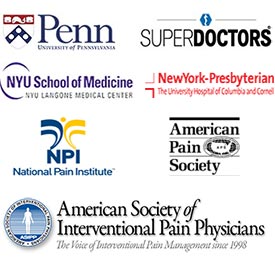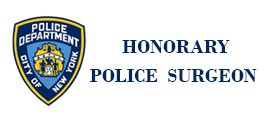Myofascial Trigger Point Therapy Specialist Doctors NYC
Myofascial Trigger Point Therapy
Muscle pain that develops from an injury or from repetitive motion can be difficult to treat properly. Myofascial pain involves not only the muscle, but also the connective tissue, called the fascia, that helps hold the muscle in place. Because the fascia is affected, myofascial pain can lead to referred pain, where pain in one muscle leads to pain in another.
Trigger points are those tender spots, usually on a muscle, that when pressed or sometimes merely touched can trigger intense pain. You can have many trigger points throughout your body, and the associated pain can be difficult for even an experienced pain management doctor to diagnose. Pain from myofascial trigger point syndrome can seem like it’s caused by a host of other conditions.
Identifying Myofascial Trigger Points
The first step of any pain treatment is an accurate diagnosis - that means visiting a pain management specialist in NYC who’s familiar with myofascial pain and myofascial trigger point therapy. Since no diagnostic tests exist to accurately identify this condition, your doctor has to know what to look for and how to find your trigger points. Fortunately, Manhattan Pain and Sports Associates has that expertise.
Your NYC pain management doctor listens to your description of symptoms and performs a physical exam. Active trigger points cause immediate pain, so they’re easy to identify. Latent or inactive trigger points may not cause pain, but are places where your muscle is abnormally tight, stiff or weak. Such muscles can develop into active trigger points.
Common Pain
Pain from myofascial trigger point syndrome is common because it can develop following an injury, a regular activity or even inactivity. While repetitive motion and blunt force trauma are the leading causes, you can develop myofascial trigger points over time from:
- Poor posture
- Non-ergonomically designed workstations
- Carrying things improperly, including backpacks, babies and briefcases
- Heavy lifting
- Long periods of sitting or lying down
Pointing to Relief
Muscles producing trigger points are clenched tight, locked into the shortest length. Several techniques exist to treat myofascial trigger point pain. All have the same result: to unlock a muscle and stretch it out. The treatment often involves massage-like therapy, but also can involve a coolant that ironically helps unfreeze the muscle.
Results vary, but you may experience relief after the first session. More often, several sessions are required. You may be sore after the therapy, but that too fades with time. Sometimes, the therapist needs to treat several muscle groups — referred pain can make it difficult to find all the trigger points. Other factors influence your recovery rate as well, such as:
- Other illnesses or injuries
- Your overall fitness level
- How long you’ve had myofascial trigger point pain
- Your nutrition and diet
- How successful you are in following the doctor’s recommendations
Manhattan Pain and Sports Associates
51 East 25th St, 4th Floor, Ste B
New York, NY 10010
(212) 533-3954



